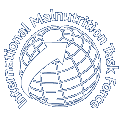Management of acute moderate and severe childhood malnutrition
Mark J Manary, Heidi L. Sandige
A review of how best to manage cases of acute childhood malnutrition in light of recent changes in standard recommendations have been published.
The standard protocol for managing SAM is the WHO 10 steps to managing SAM. Treatment of acute malnutrition takes into consideration the severity (that is, whether moderate or severe) and whether there are complications. Moderate malnutrition is treated by adding nutrient rich supplemental food that provides the daily recommended dietary allowance of all micronutrients in addition to the child’s habitual diet. Ready to use fortified therapeutic foods (a lipid rich, water free, hygienic paste that does not support growth of bacteria because water is absent) are recommended.
Uncomplicated severely malnourished children with adequate appetite have been managed at home with ready-to-use therapeutic foods, which is nutritionally equivalent to F-100 formula and contains some micronutrients necessary for catch-up growth and to replete stores.
Complicated severely malnourished children are managed in inpatient facility since these children need to be stabilised. They are fed every two hours in small amounts with a milk based formula (F-75) that provides daily energy intake of 100kcal/kg/day, 3-4 mmol/kg/day potassium and 2 mmol/kg/day phosphorus. Prompt feeding is needed to prevent hypoglycaemia. Broad spectrum antibiotics are needed to treat sepsis and oral rehydration is needed to treat shock and dehydration. Children are treated as uncomplicated once the child is stable and has appetite, usually within a few days.
This review also discussed how a concurrent diagnosis of HIV infection affects SAM managment.
Download full article here
